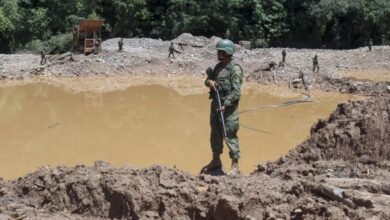Opinion: The challenge for Latin America is to be one of the most sustainable regions
Latin America has all the opportunities to take the lead and become the most sustainable region and advance in the defense of the environment.

In protecting the region’s biodiversity, Latin America, once again, lags behind. Photo: Pixabay
LatinAmerican Post | Vanesa López Romero
Listen to this article
Leer en español: Opinión: El reto de Latinoamérica para ser una de las regiones más sostenibles
Historically, Latin America is known for being a relegated, precarious and unequal region, made up of developing countries and still suffering the consequences of an aggressive colonization process . But it is also recognized for its wide and varied culture, for its artistic representatives at an international stage and, of course, for its biodiversity. And, according to data from the United Nations Environment Program (UNEP), the region contains more than 40% of the planet's biodiversity , which is not surprising when only the Amazon is home to 10% of biodiversity of the world.
But when it comes to the protection of that biodiversity, Latin America, once again, lags behind. Although the rate of loss of tropical forests has decreased in several countries, data show that ecosystems and species in the region are increasingly threatened. According to the WWF, this is due specifically to four main factors: invasive species, habitat loss, pollution, and climate change .
Also read: Which Latin American countries have promoted the use of electric cars?
The last two are not exclusive factors in Latin America. In fact, in the top-ten list of countries that generate the most pollution on the planet, only one latin (Mexico) is on the it. The United States, Russia and China are the three most polluting countries, generating more than 50% of global CO2. Of course, it must be borne in mind that this is not because the Latin American economy is more sustainable compared to other regions, but rather that the economy here advances much slower compared to that of countries that are world leaders.
The consequences of climate change, ironic as it may seem, are not seen first by world powers. Quite the opposite. The south, that cardinal point that is seen with lowness, is the first to receive the blow. The environmental crisis, generated by the decisions and actions taken by greedy people from the old continent centuries ago, today affects the most vulnerable. Of course, there was no environmental awareness, there were so many resources that there was no fear that they would run out of them . But they are running out and those who are living the consequences today are not the most socially and economically well-off, but those who live with what they can.
Faced with this situation, in Latin America we cannot afford to remain like this. The region has all the potential to adopt the environmental cause, to become a sustainable region that goes further and protects what already belongs to us. I mention it again: we have more than 40% of the world's biodiversity. It is a very high figure. Also, what about the environmental defenders of the region? Committed people who are willing to put their lives at risk to protect ecosystems.
We can also mention the initiatives for the use of renewable energy that are being generated throughout the Central and South American continents, or the carbon taxes that Chile and Mexico have implemented . Yes, there are political and social actions that give us a more hopeful outlook. But there is a lack of unity, it is necessary to understand that it is not only about saving trees, which is what is often thought of when thinking about the fight against climate change. It is about saving ourselves, the human species.
Today more than ever, we must take advantage of the factors that we have in our favor to reduce those that are against. It only needs to be seen that the actions aimed at environmental protection are the ones that most generate socio-economic returns , according to UNEP data. The moment is critical, since we are facing the post-pandemic, and it is time to decide to be sustainable from the micro to the macro, that is, from our individual actions to political and collective actions.




